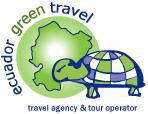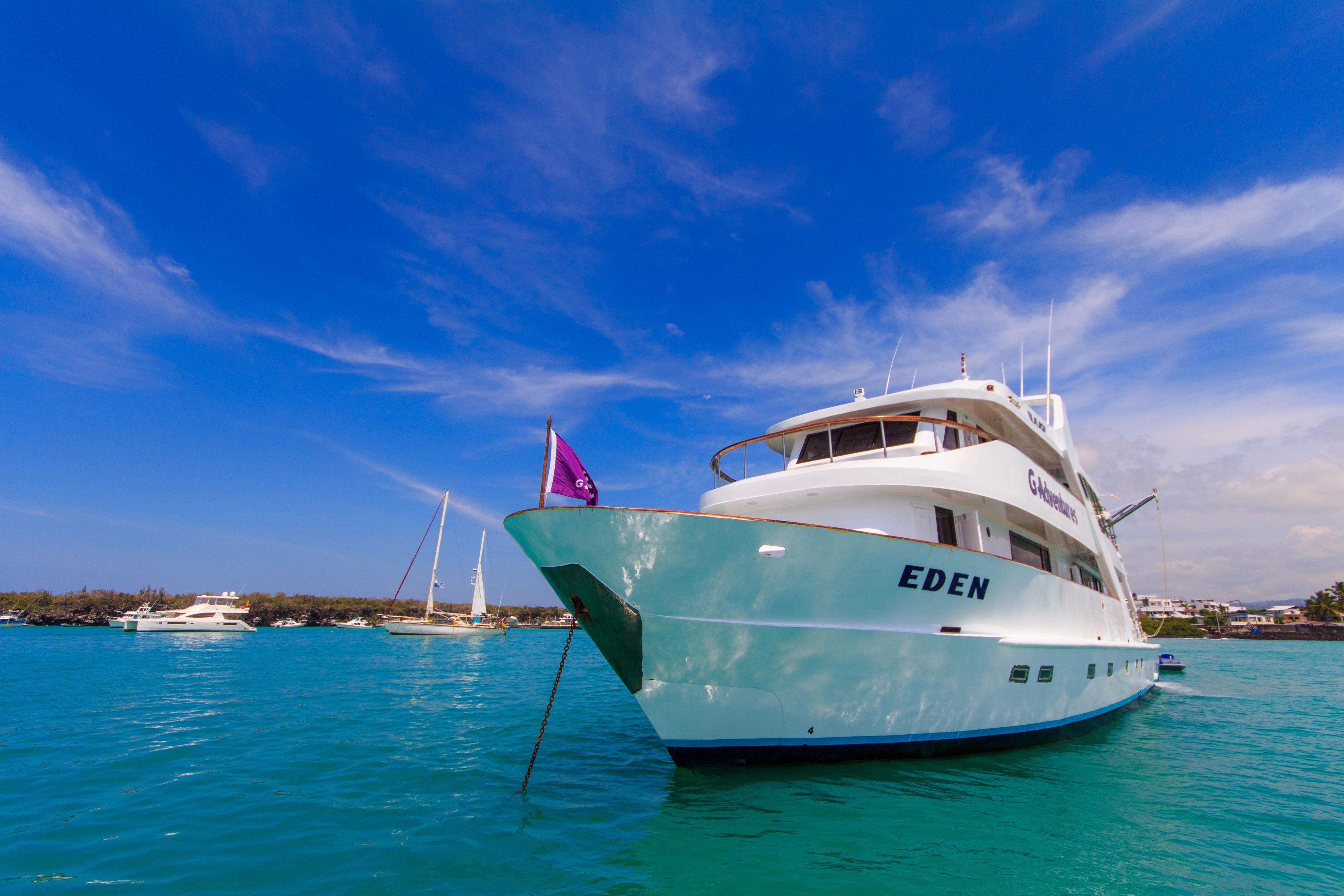DAY 1 : THURSDAY
FLY TO GALAPAGOS – HIGHLANDS OF SANTA CRUZ
Early in the morning you will catch your flight from mainland Ecuador to the Galapagos. Arriving to the airport, you must first pay the National Park entrance fee of U.S. $100 per person before collecting your luggage. Leaving the arrival hall, the National Park Guide of the “Angelito I” will be waiting for you and accompany the whole group to the Baltra harbor, where the “Angelito I” is anchored. Now the trip can begin! Highland Santa Cruz: Drive up to the highlands in a bus. In a short time one can see the transition between the different vegetation zones from the Arid zone to the Transition zone up to the Scalesia zone (and agricultural area). The highlands offer the lush humid zone with its vegetation of Miconia bushes, Scalesia and inactive volcanic cones. You will walk to Los Gemelos (meaning “twins”) which are two big pit craters in the middle of a wonderful Scalesia forest. These endemic trees and the lush vegetation, with a lot of different ferns, mosses and liverworts, show a totally side of the Galapagos. Darwin’s Finches and the vermilion flycatcher inhabit this area. (Lunch, Dinner)

DAY 2: FRIDAY
ESPAÑOLA: PUERTA SUAREZ – PLAYA GARDNER
Española Island (or Hood Island) is a true highlight in the Galapagos, both above and below the water. Due to its very remote location, there are a large number of endemic species that evolved independently from the rest of the archipelago. Gardner Bay is a spectacular, long, white-sand beach where one can swim with sea lions and wander at your own pace. Your guide will lead you while snorkeling, pointing out wildlife like green sea turtles, manta rays, white-tipped reef sharks, and tropical fish. Afterwards, you will visit Punta Suarez. This site offers quite a display of wildlife: marine iguanes with copper red patches, swallow-tailed gulls, the endemic long-billed mocking bird, finches, mockingbirds, masked and blue-footed boobies, oystercatchers, sea lions, and lava lizards. This is the only island where the waved albatross is to be seen during their breeding season. From April through December, the fascinating waved albatrosses are found on the Island performing mating rituals, nesting, and raising their young. (Breakfast, Lunch, Dinner) 
DAY 3: SATURDAY
SANTA FE – SOUTH PLAZA
Santa Fe Island has one of the most beautiful coves of all the visitor sites in the region, a turquoise lagoon protected by a peninsula of rocks and small islands that extends from the shore. The Santa Fe species of iguana are a brighter yellow color and have uncommonly large spikes on their spine. The opuntia cactus, a favorite food of the land iguana, grows unusually tall here, up to 33 feet high and are the largest of their kind in Galapagos. Manta rays and sea turtles may be seen against the sandy bottom of Santa Fe’s beautiful anchorage. Today you will have a few opportunities to snorkel, hopefully swimming with sea lions and colorful fish. South Plaza Island has one of the largest populations of land iguanas in the archipelago and can be observed feeding on the prickly pear cactus. There are also iguanas that are a cross between the marine and land varieties. Along the sea cliffs frigate birds, shearwaters, brown pelicans and masked boobies may be seen. You may snorkel from the beach where turtles, sharks and other fish are found. One of Plazas attractions is also a colony of bachelor sea lions who laze around on the sand. Depending on the season, the sesuvium ground vegetation changes its color from intense green in the rainy season to orange and purple in the dry season. (Breakfast, Lunch, Dinner)

DAY 4 : SUNDAY
BLACK TURTLE COVE – DEPART GALAPAGOS
With the dinghy we go into Black Turtle Cove, a big protected mangrove cove located in a remote corner of Santa Cruz Island. In the far away small corners the motor of the dinghy is turned off so we can travel noiselessly and observe the marine turtles. There are a lot of them in the cove during mating and nesting season (December to February), but even out of season there are always some turtles staying back in the mangrove cove to rest. Spotted eagle rays, golden rays, white-tipped reef sharks and young Galapagos sharks can often be spotted. At the end of the cruise, the passengers leave the Angelito again at the Baltra harbor. Your guide takes care of everything until you’re on your flight back to the continent. (Breakfast)


























